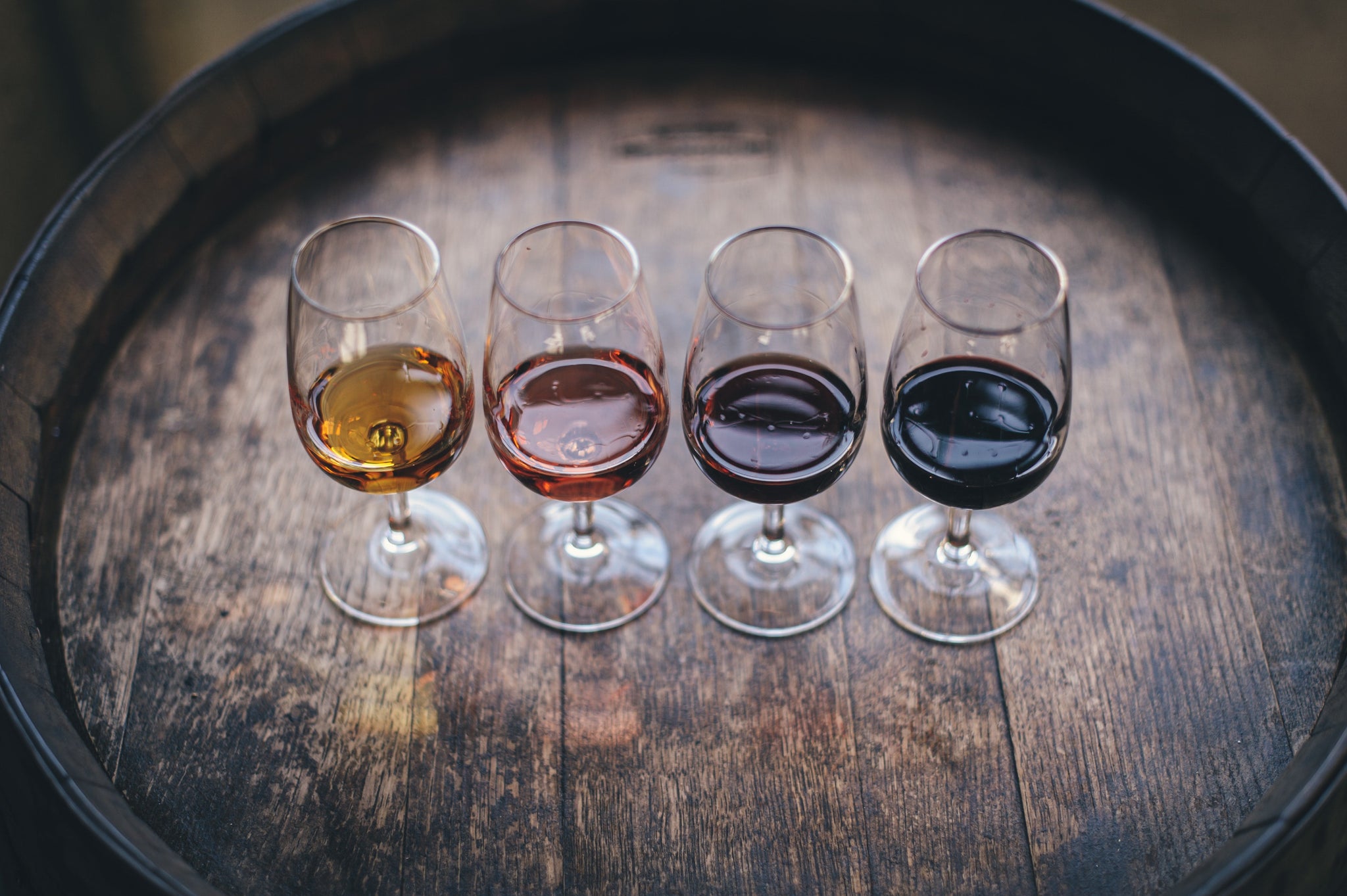Your Cart is Empty
OPEN NOW | Same Day Delivery in London & Next Day Delivery in UK (Gift Options)

Despite being one of the most popular alcoholic beverages in the world, wine can be intimidating for many. The idea that wines can be “fine”, with some more expensive than others, has the potential to confuse customers, along with the different types and terms — like “vintage”’ — that comes with shopping for a bottle. And because there are various types of wine, there is a process of making each one.
Putting it simply, wine is made by fermenting wine grapes, which are actually different from the ones you can buy in the store. These wine grapes are smaller with thicker skins, a higher sugar content, and tend to have seeds in them. But as there are over 1,300 varieties of these grapes, you can get a huge range of finished wines.
As well as the most obvious distinction between them — the colour — you can have wines that are sparkling, still, fortified, or aromatised, depending on the production methods and what grapes are used.
Some common grapes used to make wine include:
The basic steps to winemaking begin with harvesting the grapes and preparing them for the fermentation process. When creating red wine, the pulp of the grapes is fermented along with the juice. White wine is created by removing the skin and pulp before the fermentation process.
To start the fermentation, yeast is added to the juice and pulp, if it isn’t naturally present as ‘ambient yeast’ on the fruit. During this process, the sugars in the fruit are converted into ethanol, giving the wine its alcohol content, and carbon dioxide, which escapes into the atmosphere. Once this process is complete, the wine is separated and filtered from the must.
For red wine, the next step is known as malolactic conversion, which simply converts the crisp malic acid to a creamy lactic acid, making the wine taste less harsh. The wine is then left to mature — in the case of reds, this traditionally involves it being transferred to wooden barrels.
During this time, any solid particles in the wine drop to the bottom of the barrel, leaving the wine clear. However, many vintners choose to clarify the wine in order to remove as many of these particles as possible, adding a fining agent to avoid any cloudiness in the finished bottle. These help the small particles coagulate together, creating a smaller amount of larger molecules that can be easily filtered out.
Traditional fining agents are casein (milk protein), albumin (egg whites), gelatin (animal protein), and isinglass (fish bladder protein). Because these agents are animal by-products, many wines can’t be considered vegan or even vegetarian.
However, more and more vineyards are choosing to clarify wine with vegan-friendly agents such as bentonite clay or activated charcoal.
Single-varietals are relatively self-explanatory. They are predominantly made with one type of grape, rather than a blend. Riesling, for example, is made with only Riesling grapes.
However, as wine is produced all around the world, each region generally has its own rules for how much of the wine must be made up of the same grape for it to be classed as a single varietal.
For example, single-varietal wines in the USA, Chile, South Africa, Australia, and Greece must be produced with at least 75% of the same grape. In Argentina, this is 80%, while in Italy, France, Germany, Austria, Portugal, Spain, and New Zealand, it is 85%.
Wine blend is made by blending different grape varieties. Generally, this blending happens with fermented and aged single-varietal wines but grapes that are blended to be fermented together produce what’s known as a field blend, such as port wine.
While the quality of a wine is relatively subjective — you either like it or you don’t — some wines are considered “fine” due to the high-quality grapes they contain, which are grown in optimal conditions to produce the perfect blend.
Wine may also be considered fine if it’s produced in an esteemed vineyard in a traditional winemaking region. Bordeaux and Burgundy in France, for example, are traditional wine regions that consistently produce fine wines.
You can view our full range of wines here
Comments will be approved before showing up.